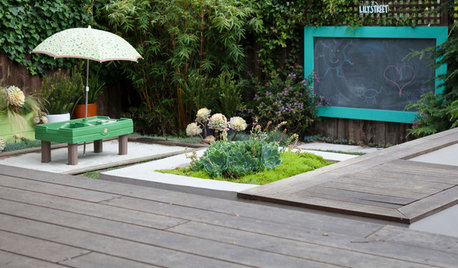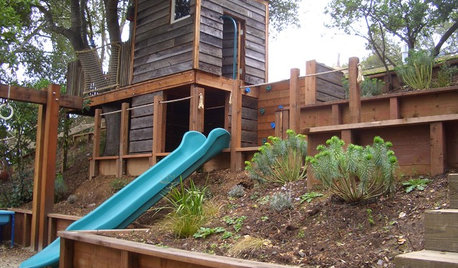Need encouragement
2ajsmama
12 years ago
Related Stories

BEDROOMS10 Zen-Conjuring Bedrooms That Encourage Calm
Slumber in serenity with simplicity-celebrating bedroom ideas borrowed from the Japanese
Full Story
ARCHITECTURECliffside Homes Encourage Living on the Edge
Thrills are everyday affairs even in structurally sound homes on slopes and cliffs, thanks to jaw-dropping views and unique configurations
Full Story
FUN HOUZZWorld of Design: 16 Fun Homes That Encourage Play
What does a fun home look like? These 16 very different properties around the world are designed with enjoyment in mind
Full Story
KIDS’ SPACESInspiring Book Nooks Welcome Young Readers
Encourage a lifelong love of reading with inviting and cozy places where kids can burrow into books
Full Story
WINTER GARDENINGPruning Secrets for Exquisite Roses
Encourage gorgeous blooms year after year with this time-tested advice on how to prune your rosebush in winter for health and shape
Full Story
KIDS’ SPACES15 Ideas for a Children’s Discovery Garden
Pique curiosity and encourage creativity by adding play features that appeal to kids’ imagination and senses
Full Story
LIFE10 Ideas for Making Screen-Free Play a Reality
Here's how to tempt your children with activities that will encourage their creativity and keep them away from the TV
Full Story
PRODUCT PICKSGuest Picks: 20 Frameworthy Works to Help You Get Motivated
Conquer your goals and lift your spirits with encouraging art prints of inspirational quotes for your walls or shelves
Full Story
KIDS’ SPACES8 Outdoor Playspace Ideas to Nurture Kids' Imaginations
Can the call of the wild beat out the call of the TV this summer? With these ideas for encouraging exploration, the game is on
Full Story
KIDS’ SPACESBeat the Midsummer Blahs — 10 Ways to Recharge a Kids' Space
Overcome boredom and encourage a fresh wave of creativity and fun among young ones with these energizing ideas
Full Story





rustico_2009
rustico_2009
Related Professionals
Bridgetown Landscape Architects & Landscape Designers · Fillmore Landscape Architects & Landscape Designers · Forest Park Landscape Architects & Landscape Designers · Norwood Landscape Contractors · Arlington Landscape Contractors · Burien Landscape Contractors · Cornelius Landscape Contractors · Danvers Landscape Contractors · Hilo Landscape Contractors · Mission Landscape Contractors · Riverhead Landscape Contractors · Shenandoah Landscape Contractors · Phoenix Solar Energy Systems · Rehoboth Solar Energy Systems · Easton Solar Energy Systemsbi11me
2ajsmamaOriginal Author
magz88
bi11me
magz88
myfamilysfarm
2ajsmamaOriginal Author
myfamilysfarm
bi11me
2ajsmamaOriginal Author
myfamilysfarm
2ajsmamaOriginal Author
bi11me
2ajsmamaOriginal Author
myfamilysfarm
2ajsmamaOriginal Author
barb5
2ajsmamaOriginal Author
MilesAwayFarm
2ajsmamaOriginal Author
Jon_dear